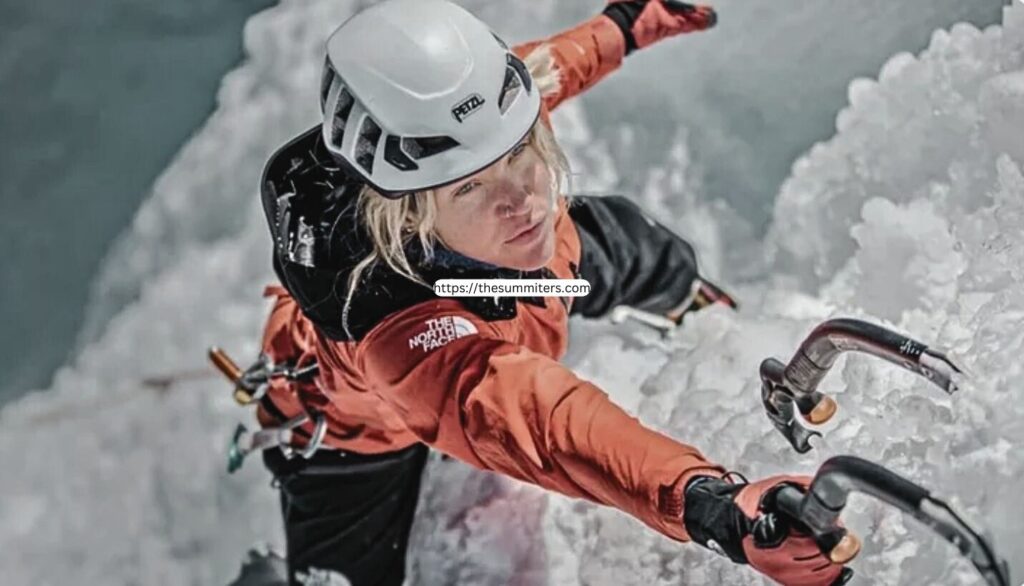In a gripping narrative of high-altitude exploration and the unforgiving realities of extreme conditions, U.S. Climber Anna Pfaff and Priti Wright embarked on a challenging expedition between April 19 and April 21, 2022. Their mission: to conquer the formidable 1,200-meter Harvard Route on Alaska’s daunting Mount Huntington. Little did they anticipate that this adventure would lead to a life-altering ordeal for one of them.

The Challenging Ascent of Climber Anna Pfaff
Climbing the icy precipices of Mount Huntington presented more challenges than Pfaff and Wright had bargained for. It was early in the season, and the two intrepid climbers were the first to reach the summit, a remarkable achievement in its own right. The climb itself, followed by the taxing descent, consumed a grueling three days of their lives.
After successfully conquering the Harvard Route, Pfaff and Wright made their descent through the treacherous West Face Couloir, eventually returning to their base camp. It was at this point that an unforeseen tragedy began to unfold.

The First Indications of Frostbite
As Pfaff entered their tent and began to change out of her gear, a disconcerting sight met her eyes. Her right foot was swollen and had taken on a whitish, pallid hue – an unmistakable sign of frostbite. Pfaff, a trauma nurse by profession and a seasoned adventurer, immediately grasped the severity of the situation. Swift actions was imperative to prevent further damage.
Acting promptly, she sheltered her feet inside her sleeping bag, providing much-needed warmth and respite. It’s important to note that Pfaff had been equipped with top-quality boots, regularly changing her socks, and maintaining adequate hydration throughout the climb. Surprisingly, her feet had not experienced extreme cold during the ascent, and no evident mistakes in their preparations were made. Unfortunately, the temperature took a sharp drop during the night as they descended to their base camp.
Desperation and the Search for Rescue
Recognizing the urgency of their predicament, Pfaff and Wright sought the assistance of Talkeetna Air Taxi (TAT), the organization responsible for logistical support in the region, to arrange their rescue. However, they found themselves at the mercy of Mother Nature, as the weather deteriorated, rendering it impossible for the rescue plane to reach their location.
Pfaff recounted the sinking feeling that overwhelmed her when it became clear that they were destined for another frigid night on the glacier, which was even colder than the previous one, intensifying their dire situation.
Read More: Anna Pfaff | There’s Life After Frostbite
A Shocking Morning Discovery
Upon inspecting Pfaff’s frostbitten feet the next morning, both climbers were alarmed by the extent of the damage, particularly to her right foot. It wasn’t until April 23 that the plane managed to arrive and evacuate them from the glacier, swiftly transporting Pfaff to the hospital.
Possibilities of Treatment
In the Anchorage Emergency Room, a vascular surgeon delivered a grim prognosis – there was little hope for Pfaff’s frostbitten toes. The window for administering blood-thinning medications had regrettably closed.
Nonetheless, a glimmer of hope appeared thanks to the collective efforts of fellow climbers Priti Wright, Andres Marin, and Jeff Wright. Pfaff was transferred to the Harborview burn unit in Seattle, where she embarked on a regimen of Hyperbaric Oxygen Treatment (HBOT). Although still classified as experimental in the United States, this treatment had shown promise in reactivating and enhancing circulation in cases similar to Pfaff’s.
Medical experts pointed out that the mild cold injuries Pfaff had accrued throughout more than 15 years of alpine climbing had likely played a role in her current predicament. Even minor frostbite to the extremities could precipitate more severe consequences in subsequent frostbite incidents.
The Rollercoaster of Recovery
Enduring several HBOT sessions, each lasting two hours and occurring twice daily, was grueling. Moreover, the treatment’s temporary side effects took a toll on her hearing and vision. Coping with this arduous process proved emotionally taxing, transforming these weeks into a turbulent rollercoaster ride.
In a recent update shared on social media, Pfaff disclosed that this week marked her “final stand” with her toes. Throughout this ordeal, the climbing community has united in support of Anna Pfaff, displaying unwavering empathy for one of the world’s most accomplished rock and ice climbers. Her story serves as a stark reminder of the sacrifices and challenges faced by those who dare to conquer the world’s most imposing peaks.